Campanula, also known as bellflower, is a genre of plants that includes biennials and perennials with bell-shaped flowers.
Start campanula seeds indoors 8 weeks before the last frost date. Sow on the surface. Full sun to part shade. Some species require cold-moist stratification .
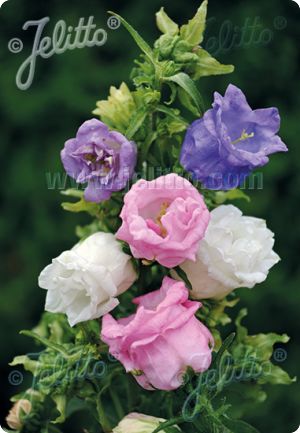
Campanula medium is an old-fashioned biennial that blooms in early summer with large, bell-shaped flowers in shades of pink, purple and white. Great for cutting . This heirloom flower has been loved by many generations of gardeners.
Campanula medium blooms the second year. After flowering, pull up the plants and shake them to sow the seeds for next year. Hardy in zones 5-8.
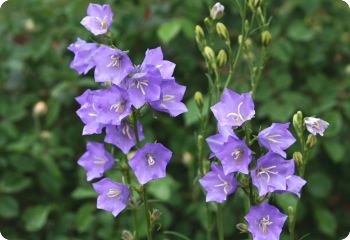
Campanula persicifolia 'Telham Beauty' blooms in early summer with beautiful, china-blue flowers. This slowly-spreading perennial can be divided every 2-3 years, if desired. It also self sows.
Campanula 'Telham Beauty' is a lovely companion plant for roses . It combines beautifully with dianthus , foxglove and poppies . Hardy in zones 3-8.
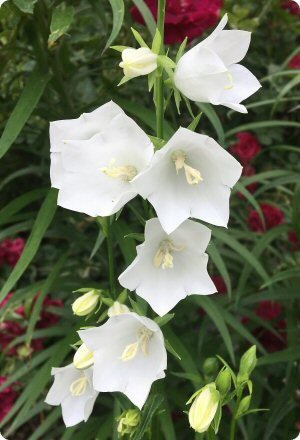
Campanula persicifolia 'Alba' is the white-flowered form of peach-leaved bellflower. It blooms in June with clusters of pure white flowers on tall stems. It's nice for cutting, and it looks good with practically everything in the garden.
Campanula persicifolia is a mainstay of the perennial garden. Hardy perennial in zones 3-8.

Campanula glomerata 'Superba' is a reliable, spreading perennial that blooms in early summer. The stems are topped with dense clusters of rich violet-blue, bell-shaped flowers. It may repeat bloom if cut back after the first flush is over.
Campanula glomerata 'Superba' goes well with other flowers in the garden or the vase. Shown here with California poppy . Hardy in zones 3-8.

Campanula latifolia 'Brantwood' (Greater Bellflower)
Campanula latifolia 'Brantwood' blooms in June with large, violet-blue bells on tall stems. It's a long-lived, shade-tolerant perennial.
Campanula 'Brantwood' is one of the showiest bellflowers. It makes a wonderful companion plant for roses. In my garden, it is planted with Digitalis lutea and Dianthus carthusianorum . Hardy in zones 3-9.

Campanula rotundifolia is a beautiful wildflower with violet-blue, bell-shaped flowers from June to September. The short, spreading plants looks lovely in the border, rock garden or wildflower garden. I plant them around the base of roses.
Campanula rotundifolia is drought tolerant , and it self-sows in moderation. The seeds require 5 weeks cold-moist stratification. Hardy in zones 3-9.
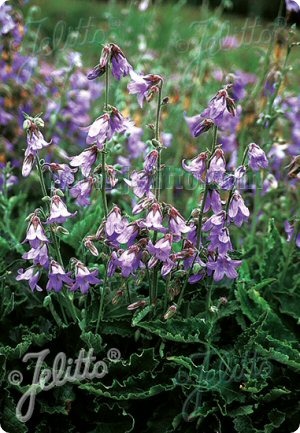
Campanula sarmatica blooms in midsummer with soft blue, bell-shaped flowers over ruffled leaves. It's a beautiful gem for the rock garden or the edge of a path where you can admire it up close.
Campanula sarmatica is native to the Caucasus. It likes full sun in cool climates and part shade in hot summer areas. Hardy in zones 5-8.
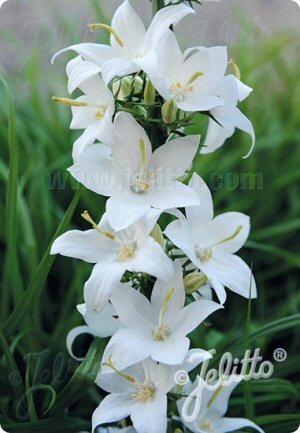
Campanula pyramidalis 'Alba' is a biennial with white, star-shaped flowers on long stems that can grow up to 7 feet tall. Hardy in zones 3-10.
White Chimney Bellflower blooms for a long time in July and August. It looks nice growing against a fence or the foundation of a house, but it can also be used to create a tall exclamation point anywhere in the garden.
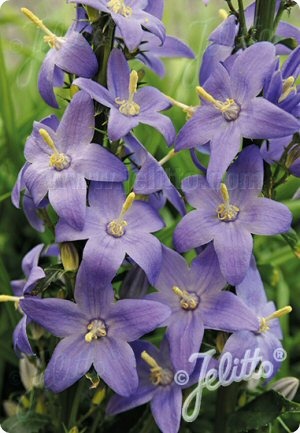
Campanula pyramidalis 'Blue' is the blue version of the Chimney Bellflower. The china blue flowers are simply beautiful.
A fun fact about Chimney Bellflower: You can tell what color the flowers will be from the color of the seeds. Brown seeds produce blue flowers, and white seeds produce white flowers. Hardy in zones 3-10.
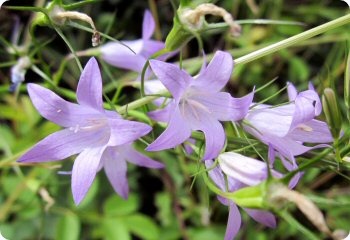
Campanula rapunculus is a biennial with soft leaves that can be used in spring salads and a crunchy, white taproot that tastes like a mild radish (harvested in the fall). It blooms in the second year with lavender-blue, bell-shaped flowers.
Campanula rapunculus is native to Europe. It likes full sun in cool climates and part shade in hot summer areas. Self-sows. Hardy in zones 4-9.
